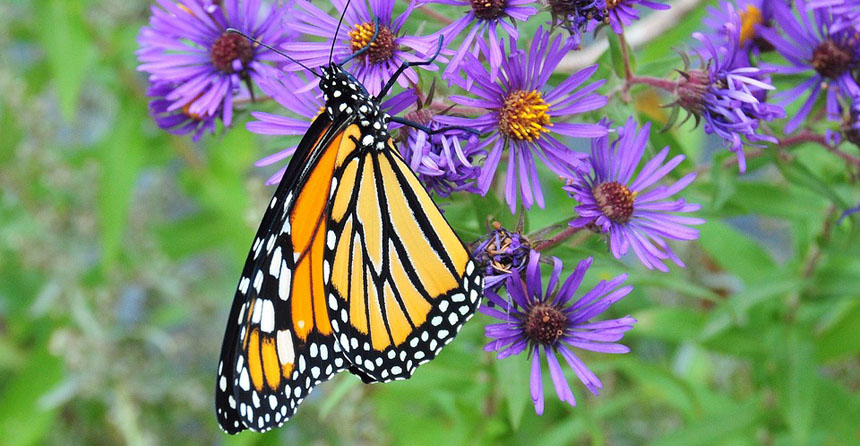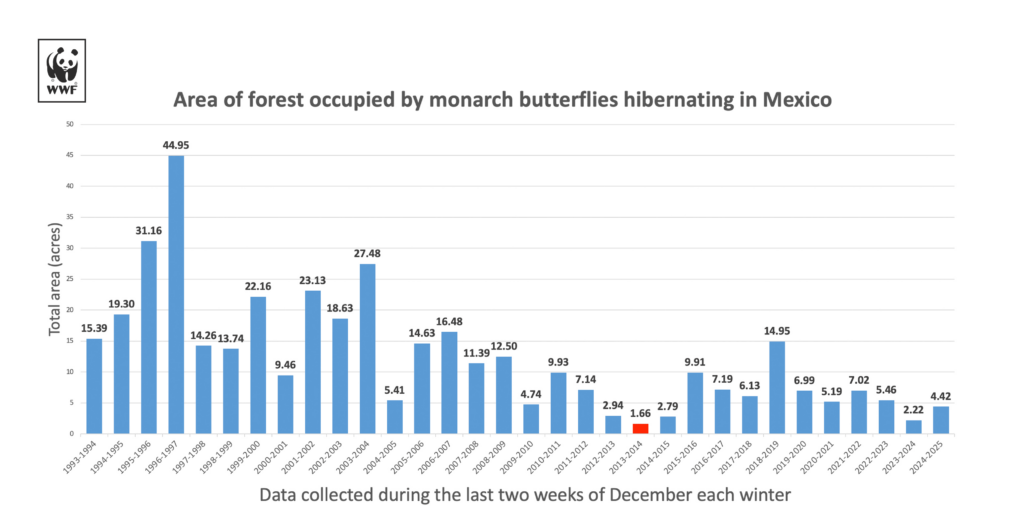
The latest annual survey of the eastern monarch butterfly population reveals a significant and hopeful increase, according to World Wildlife Fund (WWF)-Mexico and Mexico’s National Commission of Protected Natural Areas, who conducted the survey. During the 2024-2025 winter season, monarchs occupied 4.42 acres of forest in central Mexico, nearly doubling from the previous winter’s 2.22 acres. This positive trend is attributed to favorable weather conditions during migration and enhanced conservation efforts.
Historical Context
Over the past decade, the eastern monarch population has experienced notable fluctuations:
- 2021-2022: An increase to 7.02 acres from 5.19 acres the prior year.
- 2022-2023: A decline to 5.46 acres, a 22% decrease from the previous year.
- 2023-2024: A further decline to 2.22 acres, marking a 59% decrease.
The recent increase to 4.42 acres is a promising development, though the population remains below the long-term average.

Conservation Efforts and Challenges
The rebound is partly credited to improved weather conditions and ongoing conservation initiatives, including habitat restoration and protection of overwintering sites. WWF noted that forest degradation in the core overwintering zones of the monarch decreased by 10%. However, challenges persist, such as habitat loss, climate change, and the indiscriminate use of pesticides affecting milkweed availability.
Role of Farmers in Monarch Conservation
Farmers play a crucial role in supporting monarch populations by:
- Planting Monarch Habitat: Ag lands across the U.S. have a critical opportunity to positively impact monarch butterflies and other pollinators by integrating native milkweed and forage habitat into field borders and unused or non-producing lands.
- Mitigating Pesticide Exposure: Reducing pesticide exposure and implementing integrated pest management strategies to minimize harm to monarchs.
- Participating in Conservation Programs: Engaging with initiatives like the USDA’s Conservation Reserve Program can offer financial incentives for creating pollinator-friendly habitats.
The near doubling of the eastern monarch butterfly population is a testament to the positive impact of dedicated conservation efforts and favorable environmental conditions. Continued collaboration among farmers, conservationists, and policymakers is essential to sustain and further this recovery, ensuring that future generations can witness the remarkable migration of the monarch butterfly.
